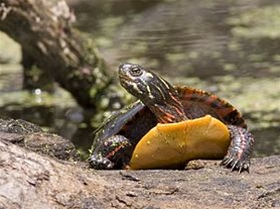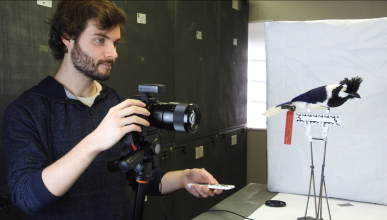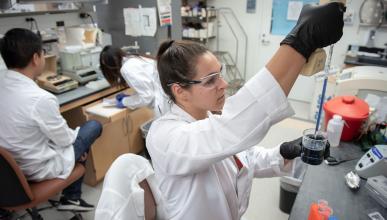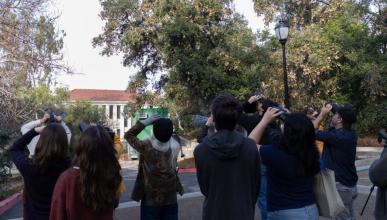
They may not be kissing cousins, but new DNA analysis confirms that turtles share ancestry with birds and crocodiles, according to a recent paper co-authored by an Occidental College biologist.
The findings are significant because the evolutionary origin of turtles-which look dissimilar to other animals-confounded our understanding of how vertebrates evolved. The analysis counters other recent research that connects turtles to lizards and snakes. In addition, the new research method-a confluence of new technology that captures and sequences DNA-opens the door to more accurate analysis of the evolution of many other species.
Assistant biology professor John McCormack, the director of Occidental's Moore Laboratory of Zoology, and his co-researchers compared thousands of locations in the genetic code of several species of turtle, alligator, crocodile, corn snake, and a New Zealand reptile called the tuatara, with that of the zebra finch, the Carolina anole lizard, and humans. They combined fully sequenced genomes as well as new genetic sequences using next-generation DNA technology-a fairly new technology--at Louisiana State University.
After close analysis, the researchers identified 1,145 common DNA markers-genomic fossils called ultraconserved elements-in the animals' hereditary code. The combination of taxonomic sampling, the genome-wide sampling scale, and species comparison shows many more evolutionary links between turtles and birds and crocodiles, than turtles and lizards and snakes.
"It's like putting magnets into the DNA regions of the organism you're interested in, and those probes will latch onto other magnets," McCormack said. "Our analysis agreed with other molecular studies supporting a sister relationship between turtles and birds and crocodiles."
"The interesting thing about ultraconserved elements is that they can grab DNA from any vertebrate," he added, "so they can solve a wide variety of interesting evolutionary questions, even in humans."
The paper, "More Than 1,000 Ultraconserved Elements Provide Evidence That Turtles Are the Sister Group of Archosaurs," has just been published in Biology Letters, a British scholarly journal. Besides Occidental, the paper's coauthors represent Boston University, UCLA, Louisiana State University, LSU's Museum of Natural Science, the University of Alaska Museum, and the University of Georgia.
McCormack and his colleagues are now using the same research method to study the evolution of birds. "We're researching how the bird families are related to one another before they diversified 60 million years ago," he said. "We now have a better chance of tracing the evolutionary history of all species on the great tree of life."




